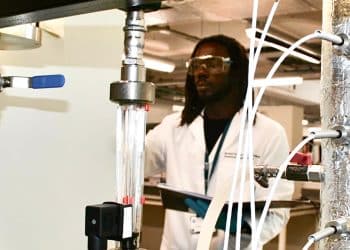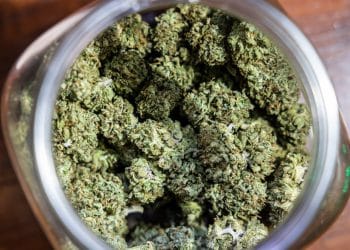Here you can find a selection of cannabis scientific studies published in the latest month. Each article is correlated with a short abstract describing the purpose of the study and the main research findings.
A great cannabis culture comes from great and peer reviewed sources! For this reason we believe in the importance of consulting reliable sources. Whether you are interested in a particular article don’t hesitate to read the full piece for more information.
Cannabis and Health ⎯ Best new findings
Analysis of the effect of FGFR inhibitor and cannabidiol in colorectal cancer
In this study the possibility of developing new target substances in order to increase the anticancer capability against colorectal cancer has been investigated. The combined effects of Fibroblast Growth Factor Receptor (FGFR) inhibitors and cannabidiol (CBD) have been studied in vitro considering cell survival and cell viability.
Moreover the signalling pathway has been identified through western blot in order to understand the mechanism of action of the substances and their combined effect.
It should be noted that FGFR is a receptor highly expressed on malignant cancer cells and it is an important anticancer target to treat. CBD has been highlighted as a potential anticancer agent due to its ability to induce cell death and to overcome anticancer drug resistance.
Source: https://doi.org/10.1158/1538-7445.AM2024-643
Cannabis sativa L. Fixed Oil and Its Nano-emulsion: Effect on Diabetes and Dyslipidemia Induced in Rats
Cannabis sativa fixed oil is composed of unsaturated fatty acids and can be crucial in treating metabolic alterations. The nano-emulsions comprising cannabis oil have shown great potential in improving the treatment efficiency.
The aim of this research is to evaluate the effects of cannabis oil and derived nano-emulsions on induced diabetes and dyslipidemia in Wistar rats. Through histopathology it was possible to highlight possible signs of cell regeneration induced by the cannabis derived treatments.
Based on the decreased levels of cholesterol, triglycerides and low-density lipoproteins in treated rats, it was possible to demonstrate the potential anti-diabetic effects of cannabis oil and derived nano-emulsions in addition to their action against cardiovascular diseases.
Source: https://doi.org/10.1177/09731296241234123
Neuroimaging studies of cannabidiol and potential neurobiological mechanisms relevant for alcohol use disorders: a systematic review
This systematic review presents all the studies related to the neuroimaging techniques investigating the mechanism of action of cannabidiol (CBD) on neurological pathways related to the possible amelioration of symptoms linked to alcohol use disorder (AUD).
The neurobehavioural and neuropsychological aspects investigated with neuroimaging methods are the focus of this review. CBD has been shown to modulate neurotransmitter systems and connections in the part of the brain implicated in AUD, suggesting its possible use as an adjuvant therapeutic agent.
Source: https://doi.org/10.1186/s42238-024-00224-0
Natural Products Derived from Cannabis sativa for Pain Management
In the last 10 years many studies and researches have been made about cannabis and pain management. During the years multiple mechanisms of action of cannabis constituents have been investigated and helped clarify the multifaceted profile of this valuable plant.
Preclinical studies have confirmed the potential of cannabis against pain. In this book chapter you will find a critical overview about the current knowledge on cannabis and its multiple pharmacological activities.
Source: https://doi.org/10.1007/164_2024_710
Cannabis use and cannabis use disorders and their treatment in the Europe
This article summarizes the cannabis use in Europe, highlighting the related adverse effects of acute and chronic consumption. Some possible health system responses to recreational use are proposed, together with possible interventions in primary medical settings and specialistic treatments for cannabis use disorders.
In addition to that, this article shows some possible connections between cannabis use disorder and other drug abuse and mental disorders.
Source: https://doi.org/10.1007/s00406-024-01776-1
Cannabis and Technology ⎯ Best new findings
Non-Destructive Near-Infrared Technology for Efficient Cannabinoid Analysis in Cannabis Inflorescences
This article evaluates the potential of hand-held near-infrared (NIR) device to assess and quantify the total cannabidiol (CBD), delta-9-tetrahydrocannabinol (THC), and cannabigerol (CBG) in cannabis inflorescences.
There is always more need of methods analyzing efficiently, rapidly and non-destructively cannabinoids content in plant samples. This research aims to optimize portable NIR devices for an accurate assessment in cannabis cultivation, regulatory compliance and pharmaceutical formulations.
Source: https://doi.org/10.3390/plants13060833
A comprehensive dataset of eight Thai cannabis classes for botanical exploration
This collection of images can be a valuable tool for botanical exploration. The dataset facilitates the study of medicinal properties of Thai cannabis, showing 14094 pictures of both dried and healthy plants.
This could serve as a base to develop algorithms capable of identifying and classifying plants and could be a valuable resource for applications in agriculture, technology development, disease prevention and research.
Source: https://doi.org/10.1016/j.dib.2024.110292
Biodiesel production from hempseed (Cannabis sativa L.) oil: Providing optimum conditions by response surface methodology
In this study the optimization of biodiesel production using non-edible hempseed oil as starting material is presented. The best highlighted paramteres that were highlighted include:
- Reaction temperature;
- Reaction duration;
- Catalyst concentration;
- Methanol to oil ratio.
The optimized synthesis of hempseed oil derived biodiesel contributes to the exploration of alternative and sustainable methods to produce energy sources.
The optimized parameters allow the production of biodiesel meeting the requirements of EN 14214, a standard for biodiesel quality. This research constitutes a proof of the potential of hempseed oil as valuable raw material for efficient biodiesel production.
Source: https://doi.org/10.2516/stet/2024006
Comparative study of polyphenolic composition and reducing properties of extracts of Cannabis sativa L., Cannabis indica and Cannabis hybrid
The aim of the present study is to evaluate and compare the polyphenolic composition of three different varieties of Cannabis. The extracts were obtained through ethanol extraction of plant matter including both leaves and inflorescences.
The biomass was macerated for multiple days, at room temperature while stirring. The total polyphenol composition of the three different extracts was determined using HPLC-DAD method.
Among other polyphenols, these were detected in different concentrations within the extracts:
- Myricetin;
- Rutin;
- Quercetin;
- Kaempferol.
The reduction properties of the extracts were evaluated using silver nanoparticles in the presence of sunlight or microwave irradiation.
Source: https://doi.org/10.59957/jctm.v59.i2.2024.1
THC and sperm: Impact on fertilization capability, pre-implantation in vitro development and epigenetic modifications
The endocannabinoid system is highly involved in regulating morpho-functional and intrinsic sperm features that are required for fertilization and pre-implantation embryo development. The present research investigates the impact of in vitro tetrahydrocannabinol (THC) treatment on sperm functions, showing also its impact on embryo development.
Bovine sperm has been used as a model due to its similarities to human sperm in terms of morphology, insemination location, epigenome and transcriptome, maturation time and early embryo development dynamics. It was found that relevant concentrations of THC would negatively affect morpho-functional features of sperm, impacting embryo development and quality.
Source: https://doi.org/10.1371/journal.pone.0298697
Veterinary Use of Cannabis — Best Latest Findings
An Insight into the Use of Cannabis in Medical and Veterinary Dermatological Applications and its Legal Regulation
This article presents an analysis of the legal acts regulating the use of cannabis and derived phytocannabinoids in the context of medical and pharmaceutical applications.
Many scientific findings show the potential of cannabis against pain, chronic diseases and certain neurological disorders in human medicine. Nevertheless there is an increase in interest also in its potential in veterinary medicine and in particular in veterinary dermatology.
Source: https://doi.org/10.55295/PSL.2024.I13
Full spectrum Cannabidiol-rich extract reduced Propofol dosage required for anesthetic induction in dogs -A pilot study
This randomized, double blind, placebo controlled study evaluated the effects of different concentrations of phytocannabinoids in a full spectrum Cannabidiol (CBD)-rich extract administered transmucosally as a single-dose at 75 minutes before induction with propofol in healthy male dogs undergoing neutering.
Previous studies on rodents and dogs have shown that cannabinoid agonists may potentiate certain anesthetics. This research shows that phytocannabinoids could be an adjunct option in anesthesia. More studies are needed to completely assess the best delivery method, dosage and time for administration before the castration.
Source: 10.3389/fvets.2024.1352314












